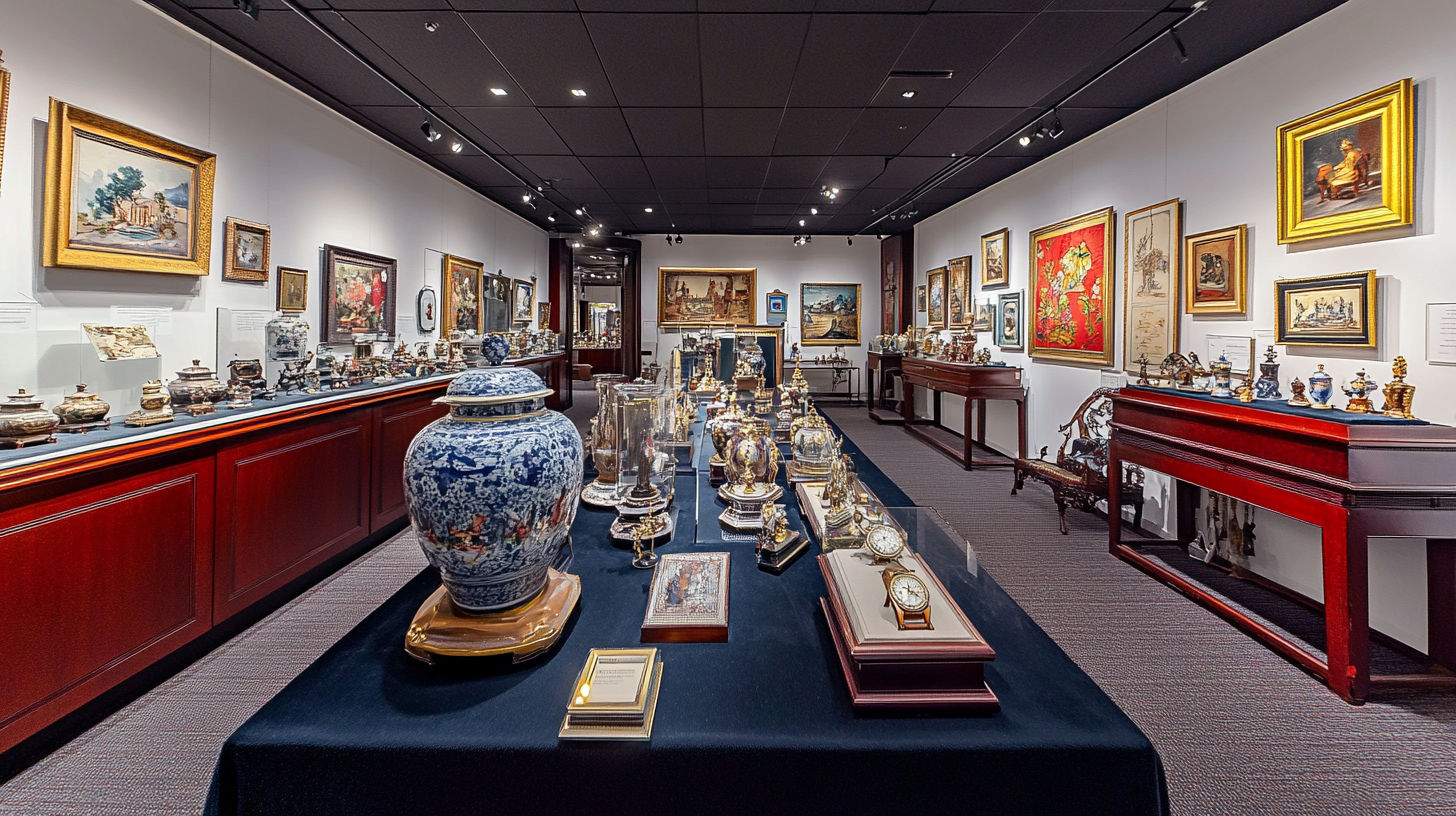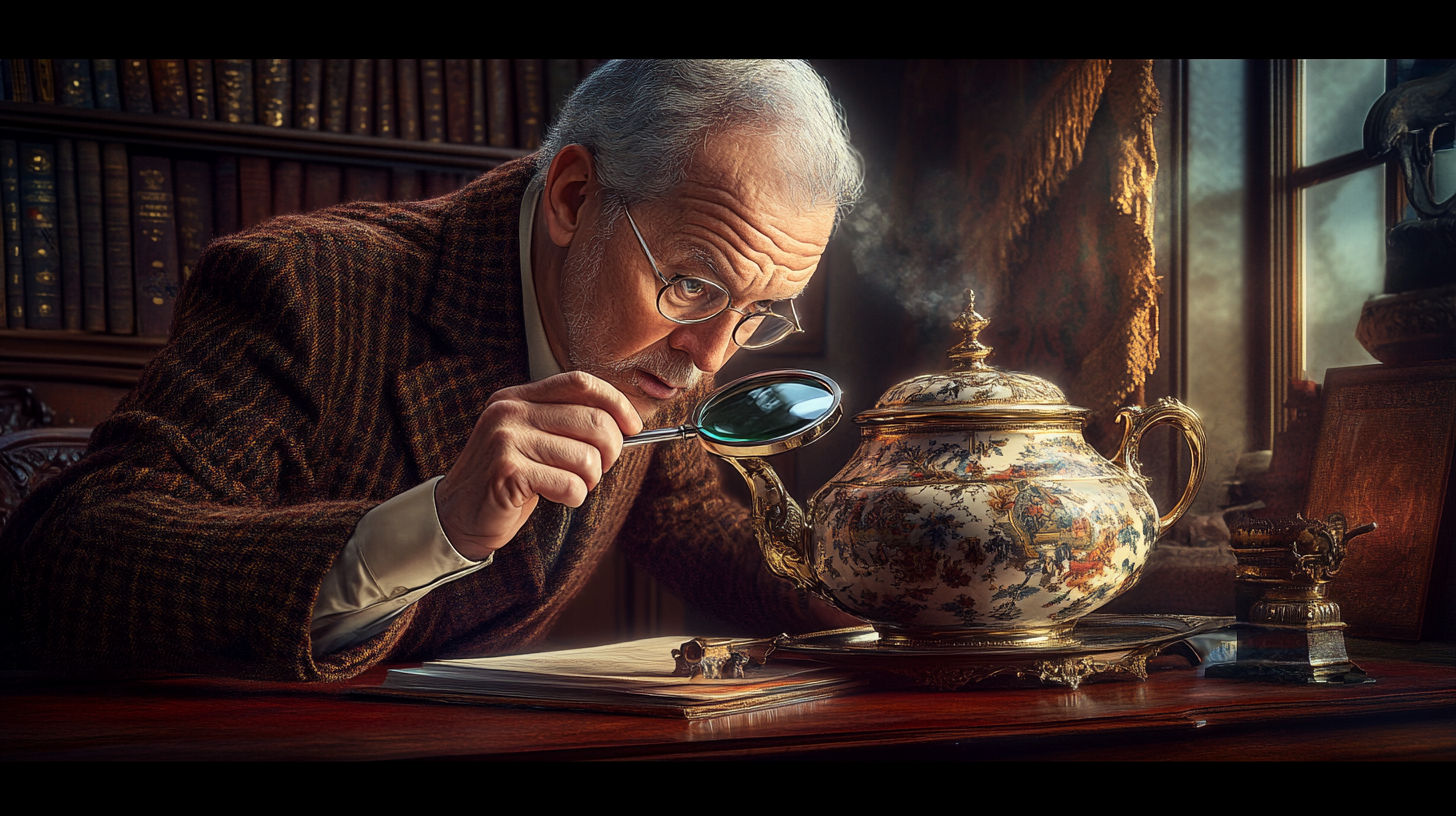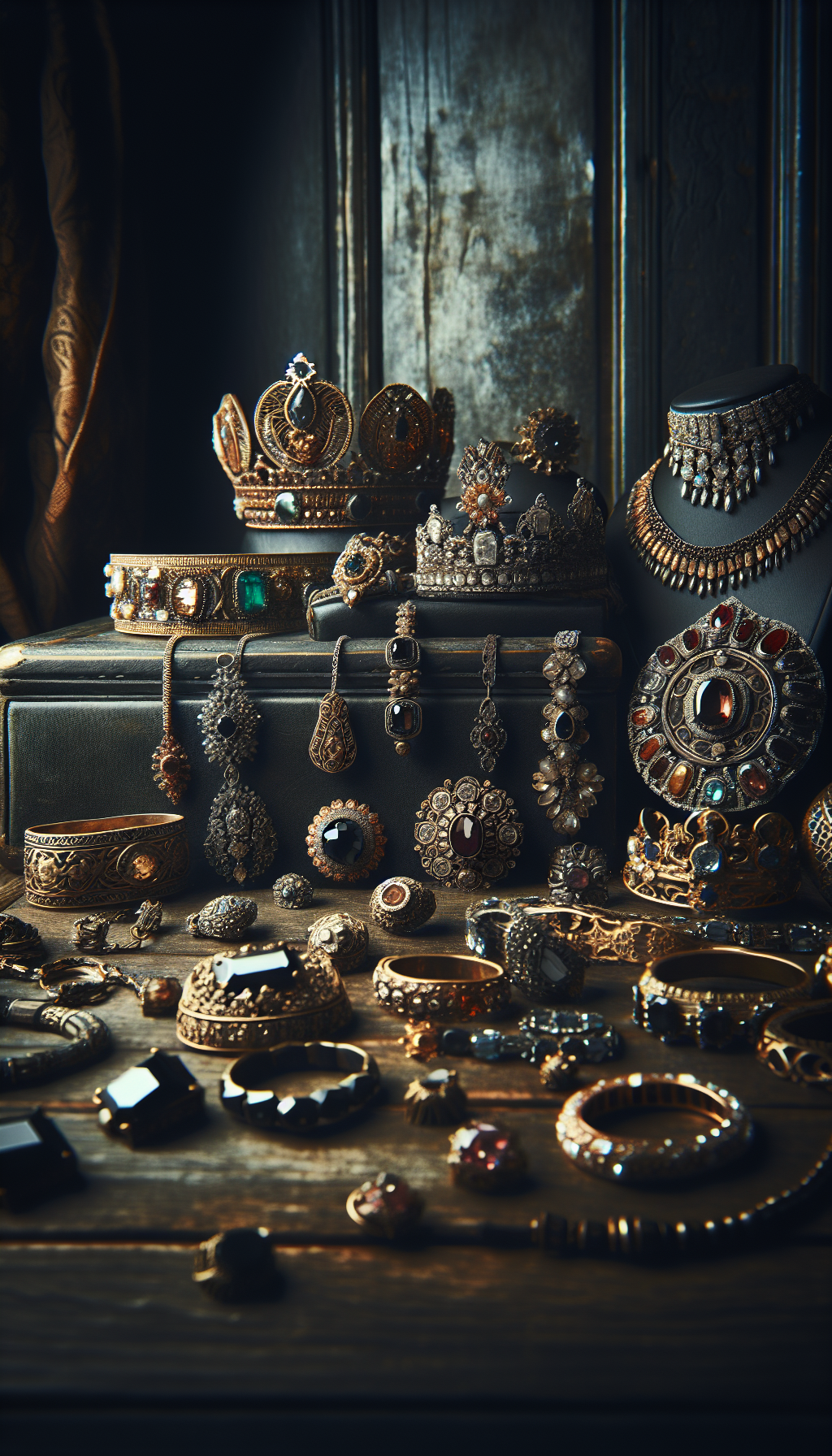Introduction to Antique Art Appraisals
Whether you’ve inherited a collection of artwork, discovered a potential treasure at an estate sale, or are simply curious about the value of pieces you’ve collected over the years, finding a qualified antique art appraiser is the crucial first step in determining the true value of your items. Professional appraisals provide not only monetary valuations but also important documentation for insurance, estate planning, donations, or potential sales.
Why Professional Antique Art Appraisals Matter
When it comes to valuable art and antiques, guesswork simply isn’t enough. Professional appraisers bring specialized knowledge, formal training, and access to extensive sales databases that allow them to provide accurate valuations based on current market conditions. Without a professional appraisal, you risk:
- Underinsuring valuable items
- Overpaying on estate taxes
- Selling items below their true market value
- Making uninformed decisions about restoration or conservation
- Being unable to substantiate claims for insurance or tax purposes
According to data from Heritage Appraisals, over 60% of inherited artworks and antiques are initially undervalued by their owners. This underscores the importance of seeking professional expertise when determining the value of your items.
Art Appraisal Industry Statistics
Types of Antique Art Appraisals
Not all appraisals serve the same purpose, and understanding the different types can help you select the right service for your needs.
Insurance Appraisals
Insurance appraisals establish replacement value—the cost to replace an item with one of similar quality and characteristics in the current retail market. These appraisals typically reflect the highest potential value to ensure adequate coverage in case of loss or damage.
These appraisals are typically updated every 3-5 years to account for market fluctuations and are essential for high-value items like fine art, antique furniture, and rare collectibles.
Fair Market Value Appraisals
Fair market value represents what a willing buyer would pay a willing seller when neither is under pressure to complete the transaction. This type of appraisal is commonly used for:
- Estate tax purposes
- Charitable donations
- Estate planning and division of assets
- Gift tax purposes
The IRS requires fair market value appraisals for donated items valued over $5,000 and estate assets over certain thresholds. According to the Smithsonian American Art Museum, these appraisals must be conducted by qualified specialists who follow strict guidelines.
Liquidation Value Appraisals
Liquidation value reflects what items might sell for in forced or time-limited sales scenarios, such as estate liquidations or bankruptcy proceedings. These values are typically lower than fair market value, often 50-70% less, as they assume quick sales with limited marketing time.
How to Find Qualified Antique Art Appraisers Near You
When searching for “antique art appraisal near me,” you’ll want to focus on finding appraisers with proper credentials, specialization in your item’s category, and a solid reputation. Here are effective methods for locating qualified professionals:
Professional Appraiser Organizations
Start with accredited professional organizations that maintain directories of certified appraisers:
- American Society of Appraisers (ASA)
- International Society of Appraisers (ISA)
- Appraisers Association of America (AAA)
These organizations require members to complete rigorous education programs, pass examinations, and adhere to professional ethics standards. They also typically require continuing education to maintain certification.
Local Museums and Auction Houses
Museums and auction houses often maintain relationships with qualified appraisers or may have staff appraisers who offer private services. Contact your local art museum or auction house and ask for recommendations. Established businesses like Schmidt’s Antiques in Ann Arbor or Heritage Appraisals in Michigan have built reputations for quality appraisal services.
Online Directories and Review Sites
Online platforms can be valuable resources for finding and vetting local appraisers:
- Better Business Bureau listings
- Yelp reviews for “Antique Appraisal” services
- Google Business profiles with client reviews
According to Yelp searches for antique appraisals in Michigan, highly-rated services include Clearview Estate Sales and Hallmark Appraisal, which both maintain ratings above 4 stars.
Local Antique Dealers and Art Galleries
Established antique dealers and art galleries often provide appraisal services or can direct you to trusted professionals in your area. These businesses typically have extensive knowledge of local markets and may specialize in specific types of art or antiques.
Verifying Appraiser Credentials
Once you’ve identified potential appraisers, take time to verify their credentials:
Appraiser Verification Checklist
Use this checklist to evaluate potential appraisers
- Holds certification from a recognized professional organization
- Specializes in your specific type of art or antiques
- Has verifiable references or reviews from past clients
- Maintains appropriate liability insurance
- Provides clear information about their appraisal methodology
- Offers a written contract detailing services and fees
- Adheres to USPAP (Uniform Standards of Professional Appraisal Practice)
Don’t hesitate to ask potential appraisers about their experience with items similar to yours. A qualified appraiser will be transparent about their expertise and will refer you elsewhere if your items fall outside their specialty area.
The Appraisal Process: What to Expect
The appraisal process typically follows a structured methodology to ensure thorough examination and accurate valuation of your antique art.
Initial Consultation
The process begins with an initial consultation where the appraiser will:
- Discuss your appraisal needs and intended use
- Explain their fee structure and timeline
- Review preliminary information about your items
- Determine whether an in-person inspection is necessary
Many appraisers like Bates Art Group in Michigan offer both in-home assessments and appointments at their offices, depending on the nature, size, and quantity of items needing appraisal.
Item Examination
During the examination phase, the appraiser will:
- Visually inspect each item
- Take detailed photographs for documentation
- Measure and document physical characteristics
- Note condition issues, repairs, or alterations
- Identify signatures, marks, or other identifying features
- Assess materials, techniques, and craftsmanship
This examination may take place in your home, at the appraiser’s office, or occasionally through high-quality digital photographs for preliminary assessments.
Research and Analysis
After the physical examination, the appraiser conducts research to:
- Verify authenticity and provenance
- Research comparable sales data
- Consult specialized databases and auction records
- Consider current market conditions and trends
- Apply appropriate valuation methodologies
According to Art of Estates, professional appraisers utilize specialized databases and auction records going back decades to establish accurate valuations based on comparable sales.
Written Appraisal Report
The final deliverable is a comprehensive written report that typically includes:
- Detailed descriptions of each item
- High-quality photographs
- Statement of the appraisal purpose
- Explanation of the valuation methodology
- Statement of appraiser qualifications
- Final value determination
- Appraiser’s signature and certification
For IRS purposes, appraisal reports must adhere to specific requirements outlined in Treasury Department regulations to be considered valid for tax filings.

Appraisal Costs and Timeframes
Understanding the typical costs and timeframes for professional appraisals helps you budget appropriately and set realistic expectations.
Typical Fee Structures
Appraisers typically charge using one of these methods:
- Hourly rates: Ranging from $125 to $350 per hour depending on expertise and location
- Flat fees: For single items or small collections, often starting at $250-$350
- Percentage-based fees: Less common but sometimes used for very high-value items
According to data from Worth Wise Appraisers, additional items typically add incremental costs of $25-$100 per item after the initial base fee. Complex items requiring extensive research may incur higher fees.
It’s important to note that legitimate appraisers never base their fees on a percentage of the final appraised value, as this creates a conflict of interest. The International Society of Appraisers explicitly prohibits this practice in their code of ethics.
Factors Affecting Appraisal Costs
Several factors influence the total cost of an appraisal:
- Appraiser’s expertise and credentials
- Complexity and rarity of the items
- Number of items being appraised
- Purpose of the appraisal (insurance vs. tax purposes)
- Need for specialized research or consultation
- Geographic location and travel requirements
Typical Timeframes
The time required to complete an appraisal varies based on complexity:
- Single item appraisals: Often completed within 1-2 weeks
- Small collections (5-10 items): Typically 2-3 weeks
- Large collections or estates: May require 4-8 weeks or longer
- Rush appraisals: Available from some providers at premium rates
For complex collections, the process may include multiple visits and consultations with specialists, extending the timeline accordingly.
Typical Appraisal Fee Ranges
Average costs based on industry data as of 2023
</tbody>
</table>
Preparing for Your Appraisal
Taking time to prepare before your appointment with an antique art appraiser can make the process more efficient and effective.
Organizing Your Items
Start by organizing your items in a logical manner:
- Group similar items together (paintings, sculptures, decorative arts)
- Ensure all items are accessible and visible
- Remove items not requiring appraisal from the area
- Make sure lighting is adequate for examination
Gathering Documentation
Collect any available documentation for your items:
- Provenance information (previous ownership history)
- Original receipts or bills of sale
- Previous appraisals or insurance documentation
- Certificates of authenticity
- Gallery or auction catalogues featuring your items
- Family records, letters, or photographs related to the items
- Conservation or restoration records
According to appraisal experts at Nostalgia Antique Appraisal Services, documentation can significantly impact valuation, especially for items with historical significance or celebrity connections.
Listing Your Items
Prepare a preliminary inventory list including:
- Brief description of each item
- Approximate dimensions
- Any known history or information
- Specific questions or concerns about individual items
- Your primary purpose for the appraisal
This preparation not only helps the appraiser work more efficiently but also ensures you don’t overlook items you intended to have appraised.

Free vs. Paid Appraisal Services
You may encounter both free and paid appraisal services in your search. Understanding the differences is important for choosing the appropriate option for your needs.
Free Appraisal Services
Many platforms and businesses advertise “free appraisals,” but these typically provide:
- Preliminary evaluations rather than formal appraisals
- Ballpark value estimates without detailed analysis
- Basic authenticity assessments
- Potential offers to purchase if provided by dealers
Services like FreeArtAppraiser.com and Heritage Auctions’ free evaluation service can provide initial insights into whether your items warrant formal appraisal, but they don’t produce legally binding documentation for insurance or tax purposes.
Free services are most appropriate for:
- Initial screening of items before investing in formal appraisals
- Getting quick estimates for curiosity or preliminary planning
- Determining if items meet minimum thresholds for auction houses
Formal Paid Appraisals
In contrast, formal paid appraisals provide:
- Legally recognized documentation
- Detailed analysis and research
- USPAP-compliant methodology
- Comprehensive written reports
- Appraiser liability and accountability
- Defensible valuations for official purposes
Formal appraisals are necessary for:
- Insurance coverage
- Estate tax filings
- Charitable donations over $5,000
- Equitable division of assets
- Museum donations
- High-value sales
Antique Art Appraisal Evolution
- Pre-1980s
Local Expertise Era
Appraisals largely relied on local experts with specialized knowledge. Limited access to comparative sales data meant valuations varied significantly by region. - 1980s-1990s
Professional Standards Development
Organizations like ASA, ISA and AAA developed standardized methodologies and certification processes. USPAP (Uniform Standards of Professional Appraisal Practice) established in 1987. - 2000s
Digital Database Revolution
Digital auction records and sales databases transformed research capabilities. Appraisers gained access to global comparative data, improving accuracy. - 2010s-Present
Online Access and AI Tools
Emergence of online preliminary valuations and AI-assisted identification tools. Professional appraisers integrate technology while maintaining expertise in authentication and market analysis.
Questions to Ask Your Appraiser
Before committing to an appraisal service, ask these important questions to ensure you’re selecting the right professional for your needs:
What are your credentials and specializations?
Verify their certification with professional organizations and their experience with items similar to yours.What type of appraisal do you recommend for my situation?
Ensure they understand your needs (insurance, estate planning, donation, etc.) and can provide the appropriate appraisal type.What is your fee structure and what’s included?
Get clear information about costs, including whether fees cover research, report writing, and any potential follow-up questions.What information will be included in the appraisal report?
Confirm that the report will contain all elements required for your intended use.How long will the appraisal process take?
Establish clear expectations about timing, especially if you have deadlines for insurance, tax filings, or other purposes.Do you maintain liability insurance for your appraisal work?
Professional appraisers should carry errors and omissions insurance to protect both themselves and their clients.How do you stay current with market trends and values?
Qualified appraisers should participate in continuing education and have access to current market data.What happens if I disagree with the appraisal value?
Understand the process for addressing concerns or requesting clarification about valuations.
Recommended Appraisal Resources
American Society of Appraisers
Find ASA-certified appraisers specializing in fine art, antiques, and personal property through their member directory.
International Society of Appraisers
Searchable database of certified appraisers with specializations in various types of art and antiques.
Heritage Appraisals
Michigan-based appraisal firm offering services for jewelry, fine art, decorative art, and antiques.
Bates Art Group
Professional qualified appraisers specializing in fine art, decorative art, and antiques in Michigan.
Art of Estates
Provides unbiased appraisals for fine art, antiques, and collectibles for various purposes including IRS estate tax and insurance claims.
Smithsonian Art Valuation Guide
Educational resource from the Smithsonian American Art Museum on how artwork is valued and appraised.
Heritage Auctions Free Appraisal
Free online evaluation service for fine art and antiques from one of the world's largest auction houses.
Common Misconceptions About Art Appraisals
Several misconceptions about art appraisals can lead to confusion or disappointment. Let’s clarify some common myths:
Myth: Appraisals Determine Authenticity
While appraisers assess authenticity as part of their process, a standard appraisal is not the same as authentication. For highly valuable or questionable items, separate authentication from recognized experts may be necessary before or in addition to appraisal.
Myth: Online Values Are as Reliable as Professional Appraisals
Online research can provide useful general information, but retail listings, auction estimates, and price guides don’t account for condition, provenance, market fluctuations, and other factors that significantly impact value. According to Risk Strategies, relying solely on online resources often results in significantly inaccurate valuations.
Myth: Appraisers Can Provide Values Without Seeing Items
While preliminary estimates might be possible from photographs for some items, accurate appraisals require physical examination to assess condition, materials, construction techniques, and authenticity indicators that aren’t visible in images.
Myth: All Appraisers Are Equally Qualified
Appraisal expertise is highly specialized. An appraiser skilled in evaluating 19th-century American paintings may not be qualified to appraise Asian ceramics or modern sculptures. Always seek appraisers with specific expertise in your item’s category.
Myth: Appraisals Never Change
Appraisal values reflect market conditions at a specific point in time. As markets evolve, values change. Insurance appraisals should be updated every 3-5 years, and more frequently for rapidly appreciating categories.
Frequently Asked Questions About Antique Art Appraisals
How much does an art appraisal cost?
Art appraisal costs typically range from $125 to $350 per hour, depending on the appraiser's expertise and location. Many appraisers offer flat fees for single items, starting around $250-$350. Complex appraisals requiring extensive research may cost more. It's advisable to request a flat fee quote at the outset rather than an open-ended hourly arrangement.
How much does it cost to have an antique appraised?
Formal appraisals for a single antique typically start at $250 to $350. Additional items usually add incremental costs of $25 to $100 per item, depending on their complexity and uniqueness. The total cost is influenced by the appraiser's qualifications, the rarity of the item, and the amount of research required to establish provenance and market value.
How do you value antique art?
Antique art is valued through a systematic process that includes: authentication and attribution, condition assessment, size and medium evaluation, subject matter analysis, provenance research, and comparative market analysis. Professional appraisers consult specialized databases of comparable sales, consider current market trends, and apply their expertise to determine fair valuations. For valuable pieces, seeking a qualified appraiser is recommended rather than relying on self-assessment.
Can I get a free appraisal for my antique art?
While some services offer "free appraisals," these are typically preliminary evaluations rather than formal appraisals. Auction houses like Heritage Auctions offer free evaluations to determine if items meet their auction thresholds. Online services like FreeArtAppraiser.com provide preliminary assessments. However, these free services don't produce the comprehensive documentation required for insurance, tax purposes, or legal matters. For these needs, a paid professional appraisal is necessary.
How often should I have my antique art reappraised?
Valuable antique art should generally be reappraised every 3-5 years for insurance purposes. However, more frequent appraisals may be necessary in cases of: significant market fluctuations in a particular art category, physical changes to the artwork (restoration, damage), or newly discovered information about the artist or provenance. Many insurance companies require updated appraisals on a regular schedule for high-value items.
What's the difference between an appraisal and an authentication?
An appraisal determines the monetary value of an item based on market factors, condition, and other relevant characteristics. Authentication specifically focuses on verifying that an item is genuinely what it purports to be—created by a particular artist, from a specific period, or of a certain origin. While appraisers consider authenticity as part of their process, dedicated authentication may require specialized experts, scientific testing, or other advanced techniques beyond a standard appraisal.
Can an appraiser buy my items after appraising them?
Most professional appraisal organizations consider it an ethical conflict of interest for an appraiser to purchase items they've appraised. This creates an incentive to undervalue items for personal gain. If an appraiser offers to purchase your items, this is a significant red flag. Reputable appraisers maintain independence from buying and selling to provide unbiased valuations. If you're seeking to sell items, consider getting an appraisal first, then separately consulting dealers or auction houses.
What should I do if I disagree with an appraisal value?
If you disagree with an appraisal value, first ask the appraiser to explain their methodology and comparable sales used in determining the value. If you're still concerned, consider seeking a second opinion from another qualified appraiser. Keep in mind that different appraisers may reach somewhat different conclusions based on their expertise and the comparable sales they prioritize. For very valuable or complex items, getting multiple appraisals is common practice.
Conclusion: Making the Most of Your Antique Art Appraisal
Finding a qualified “antique art appraisal near me” is more than just a simple search—it’s about finding the right professional with the appropriate expertise for your specific needs. By understanding the appraisal process, preparing properly, and working with certified professionals, you can ensure accurate valuations that serve your legal, financial, and personal requirements.
Remember that professional appraisals are investments that can potentially save significant money by ensuring proper insurance coverage, accurate tax filings, and informed decisions about conservation, sale, or donation of your valuable items. Whether you’re dealing with inherited artwork, building an art collection, or managing an estate, professional appraisals provide the documentation and insight needed to protect and maximize the value of your antique art.
Take time to research potential appraisers, verify their credentials, and clearly communicate your needs before proceeding. With the right professional guidance, you’ll gain valuable knowledge about your art and antiques while securing the documentation necessary for their proper care and management.
Get a Professional Appraisal
Unsure about your item’s value? Our certified experts provide fast, written appraisals you can trust.
- Expert report with photos and comps
- Fast turnaround
- Fixed, upfront pricing
No obligation. Secure upload.
| Category | Price | Notes |
|---|---|---|
| Single Item Appraisal | $250 - $350 | Base fee for one item with formal report |
| Small Collection (5-10 items) | $500 - $1,200 | Varies based on complexity and type |
| Estate Appraisal | $1,500 - $5,000+ | Depends on collection size and diversity |
| Hourly Consultation | $125 - $350/hour | For preliminary assessments or verbal consultations |




